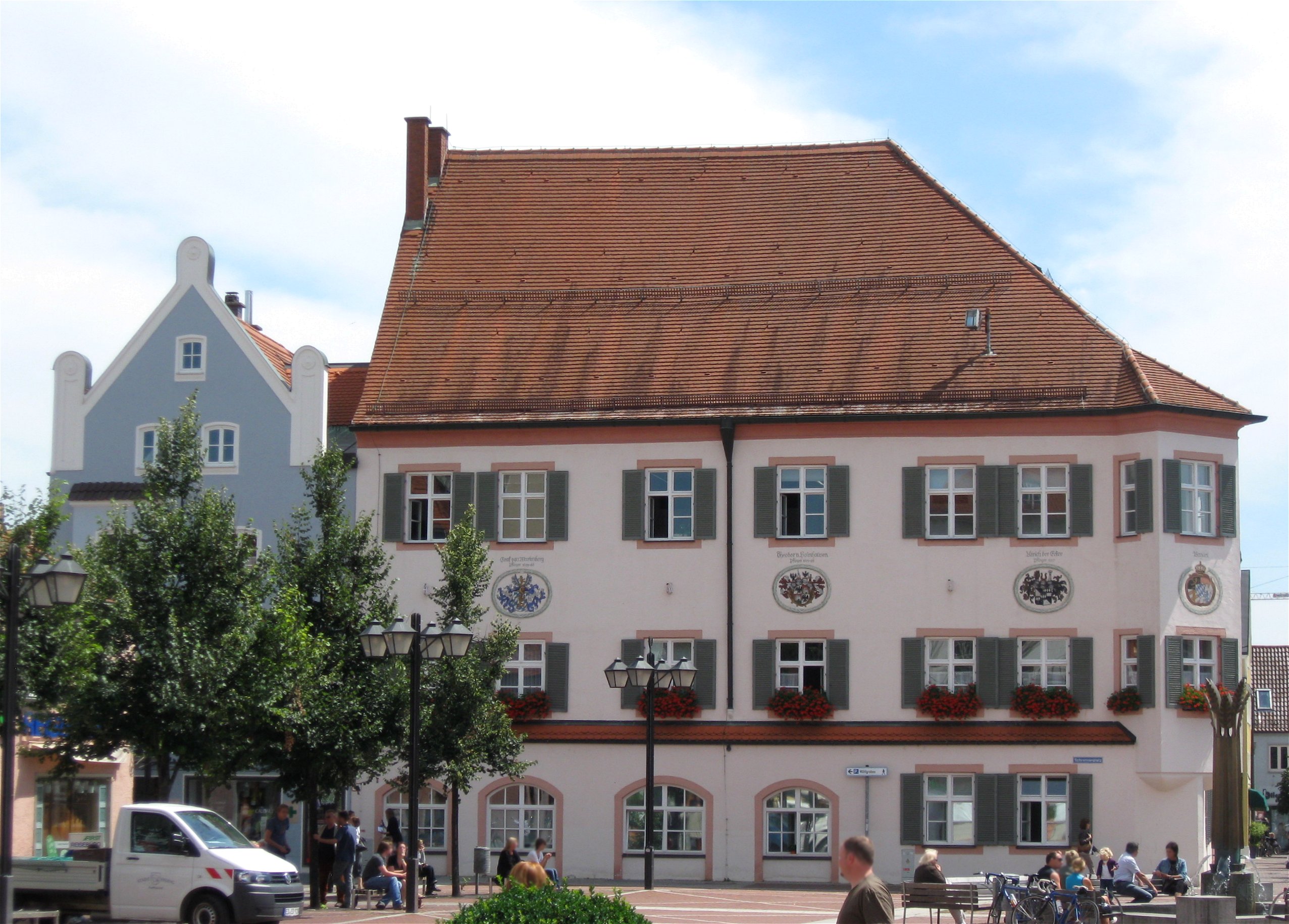|
Buchbach
Buchbach () is a municipality in the district of Mühldorf in Bavaria in Germany. Geography The municipality is located in the region of southeastern Upper Bavaria in the foothills of the Alps. Buchbach borders directly on the districts of Erding and Landshut. The state capital Munich is about 63 km away. History Buchbach was first mentioned in a document in 788. From 928 to 1803, with a brief interruption from 1266 to 1275, Buchbach belonged to the Prince-Archbishopric of Salzburg. Since 1266 it was documented as ''Markt'' (market). From 1803 it was part of the Electorate and later Kingdom of Bavaria. In the course of the administrative reforms in Bavaria Bavaria, officially the Free State of Bavaria, is a States of Germany, state in the southeast of Germany. With an area of , it is the list of German states by area, largest German state by land area, comprising approximately 1/5 of the total l ..., the municipality was created in 1818. References Mühldorf ( ... [...More Info...] [...Related Items...] OR: [Wikipedia] [Google] [Baidu] |
Mühldorf (district)
Mühldorf is a ''Landkreis'' (district) in Upper Bavaria, Germany. It is bounded by (from the north and clockwise) the districts of Landshut, Rottal-Inn, Altötting, Traunstein, Rosenheim, Ebersberg and Erding. History Most parts of the district have belonged to Bavaria from the 13th century on. The archbishopric of Salzburg possessed some estates in the region as well from the year 798.Freed, p. 13 In 1803, when the clerical states of Holy Empire were dissolved, Bavaria annexed these estates. Geography The district is located in generally plain countryside on either bank of the river Inn. Coat of arms The coat of arms displays: * the heraldic lion of Salzburg * the heraldic lion of the Electorate of the Palatinate The Electoral Palatinate was a Imperial State, constituent state of the Holy Roman Empire until it was annexed by the Electorate of Baden in 1803. From the end of the 13th century, its ruler was one of the Prince-electors who elected the Holy ... Towns and mu ... [...More Info...] [...Related Items...] OR: [Wikipedia] [Google] [Baidu] |
Bayerisches Landesamt Für Statistik
The statistical offices of the German states (German language, German: ) carry out the task of collecting official statistics in Germany together and in cooperation with the Federal Statistical Office of Germany, Federal Statistical Office. The implementation of statistics according to Article 83 of the Basic Law for the Federal Republic of Germany, constitution is executed at state level. The Bundestag, federal government has, under Article 73 (1) 11. of the constitution, the exclusive legislation for the "statistics for federal purposes." There are 14 statistical offices for the States of Germany, 16 states: See also * Federal Statistical Office of Germany References {{Reflist National statistical services, Germany Lists of organisations based in Germany, Statistical offices Official statistics, Germany ... [...More Info...] [...Related Items...] OR: [Wikipedia] [Google] [Baidu] |
Municipalities Of Germany
MunicipalitiesCountry Compendium. A companion to the English Style Guide European Commission, May 2021, pages 58–59. (, ; singular ) are the lowest level of official territorial division in . This can be the second, third, fourth or fifth level of territorial division, depending on the status of the municipality and the '''' (federal state) it is part of. The city-states Berlin, Brem ... [...More Info...] [...Related Items...] OR: [Wikipedia] [Google] [Baidu] |
Bavaria
Bavaria, officially the Free State of Bavaria, is a States of Germany, state in the southeast of Germany. With an area of , it is the list of German states by area, largest German state by land area, comprising approximately 1/5 of the total land area of Germany, and with over 13.08 million inhabitants, it is the list of German states by population, second most populous German state, behind only North Rhine-Westphalia; however, due to its large land area, its population density is list of German states by population density, below the German average. Major cities include Munich (its capital and List of cities in Bavaria by population, largest city, which is also the list of cities in Germany by population, third largest city in Germany), Nuremberg, and Augsburg. The history of Bavaria includes its earliest settlement by Iron Age Celts, Celtic tribes, followed by the conquests of the Roman Empire in the 1st century BC, when the territory was incorporated into the provinces of Ra ... [...More Info...] [...Related Items...] OR: [Wikipedia] [Google] [Baidu] |
Germany
Germany, officially the Federal Republic of Germany, is a country in Central Europe. It lies between the Baltic Sea and the North Sea to the north and the Alps to the south. Its sixteen States of Germany, constituent states have a total population of over 84 million in an area of , making it the most populous member state of the European Union. It borders Denmark to the north, Poland and the Czech Republic to the east, Austria and Switzerland to the south, and France, Luxembourg, Belgium, and the Netherlands to the west. The Capital of Germany, nation's capital and List of cities in Germany by population, most populous city is Berlin and its main financial centre is Frankfurt; the largest urban area is the Ruhr. Settlement in the territory of modern Germany began in the Lower Paleolithic, with various tribes inhabiting it from the Neolithic onward, chiefly the Celts. Various Germanic peoples, Germanic tribes have inhabited the northern parts of modern Germany since classical ... [...More Info...] [...Related Items...] OR: [Wikipedia] [Google] [Baidu] |
Alpine Foothills
The Alpine foothills, or Prealps (; ; ; ), may refer generally to any foothills at the base of the Alps in Europe. They are the transition zone between the High Alps and the Swiss Plateau and the Bavarian Alpine Foreland in the north, as well as to the Pannonian Basin (Alpokalja) in the east, the Po Valley, Padan Plain in the south and the Rhone Valley in the west. Classification The Alpine foothills comprise: *The French Prealps **Savoy Prealps **Dauphiné Prealps **Provence Alps and Prealps, Provence Prealps *The Swiss Prealps *The Northern Prealps, part of the Northern Limestone Alps: **Bavarian Prealps in southeastern Germany **Salzburg (state), Salzburg Prealps, part of the Salzkammergut Mountains in Austria **Upper Austrian Prealps **Lower Austria, Lower Austrian Prealps, leading to the Vienna Woods *The Southeastern Prealps, borderline of the Alps to the Pannonian Basin in Austria and Slovenia: **Prealps East of the Mur **Lavanttal Alps **Styrian Prealps **Slovenian Prealp ... [...More Info...] [...Related Items...] OR: [Wikipedia] [Google] [Baidu] |
Erding
Erding () is a Town#Germany, town in Bavaria, Germany, and capital of the Erding (district), rural district of the same name. It had a population of 36,469 in 2019. The original Erdinger Weissbier is a well-known Bavarian specialty. Erding is located around 31 kilometers northeast of central Munich, about a 30-minute drive by car. Regular Munich S-Bahn, S-Bahn trains connect to Munich and beyond. History Evidence of prehistoric hunter/gatherers in the Erding area dates to c. 6000 BC, findings including an axe made of deer antler. Excavations of two dwellings of at least 6.5 metres in length near Altenerding from c. 2500 BC provide the first evidence of permanent agricultural based inhabitants, while some twenty early Bronze Age graveyards from c. 1800 BC have been found in Langenpreising. Erding was founded in 1228–1230, developing as a township on an alternative route from Landshut to Munich. Erding became known as a border town, midway between the two rival cities. During ... [...More Info...] [...Related Items...] OR: [Wikipedia] [Google] [Baidu] |
Landshut
Landshut (; ) is a town in Bavaria, Germany, on the banks of the Isar, River Isar. Landshut is the capital of Lower Bavaria, one of the seven administrative regions of the Free state (government), Free State of Bavaria, and the seat of the surrounding district. With a population of more than 75,000, Landshut is the largest city in Lower Bavaria, followed by Passau and Straubing. The town, called City of the Three Helmets (), is known for its picturesque Gothic architecture, Gothic old town and the Landshut Wedding, a full-tilt medieval festival. The cityscape is dominated by the St. Martin's Church, Landshut, St. Martin's Basilica and Trausnitz Castle high above the old town. Close to Munich and Franz Josef Strauss International Airport, Landshut is industrialized (BMW, ebm-papst, Schott AG, Schott), has a low unemployment rate and is among the richest towns in Bavaria. Geography Landshut lies in the Alpine foothills. The River Isar runs through the city and splits in two in t ... [...More Info...] [...Related Items...] OR: [Wikipedia] [Google] [Baidu] |
Prince-Archbishopric Of Salzburg
The Prince-Archbishopric of Salzburg (; ) was an Prince-bishop, ecclesiastical principality and Imperial State, state of the Holy Roman Empire. It comprised the secular territory ruled by the archbishops of Salzburg, as distinguished from the much larger Roman Catholic Archdiocese of Salzburg, Catholic diocese founded in 739 by Saint Boniface in the German stem duchy of Duchy of Bavaria, Bavaria. The capital of the archbishopric was Salzburg, the former Ancient Rome, Roman city of '. From the late 13th century onwards, the archbishops gradually reached the status of Imperial immediacy and independence from the Bavarian dukes. Salzburg remained an ecclesiastical Princes of the Holy Roman Empire, principality until its German Mediatisation, secularisation to the short-lived Electorate of Salzburg (later Duchy of Salzburg) in 1803. Members of the Bavarian Circle from 1500, the prince-archbishops bore the title of ', though they never obtained Prince-elector, electoral dignity; actu ... [...More Info...] [...Related Items...] OR: [Wikipedia] [Google] [Baidu] |
Electorate Of Bavaria
The Electorate of Bavaria () was a quasi-independent hereditary electorate of the Holy Roman Empire from 1623 to 1806, when it was succeeded by the Kingdom of Bavaria. The Wittelsbach dynasty which ruled the Duchy of Bavaria was the younger branch of the family which also ruled the Electoral Palatinate. The head of the elder branch was one of the seven prince-electors of the Holy Roman Empire according to the Golden Bull of 1356, but Bavaria was excluded from the electoral dignity. In 1621, Frederick V, Elector Palatine was put under the imperial ban for his role in the Bohemian Revolt against Ferdinand II, Holy Roman Emperor, and the electoral dignity and territory of the Upper Palatinate was conferred upon his loyal cousin, Duke Maximilian I of Bavaria. Although the Peace of Westphalia would create a new electoral title for Frederick V's son, with the exception of a brief period during the War of the Spanish Succession, Maximilian's descendants would continue to h ... [...More Info...] [...Related Items...] OR: [Wikipedia] [Google] [Baidu] |
Kingdom Of Bavaria
The Kingdom of Bavaria ( ; ; spelled ''Baiern'' until 1825) was a German state that succeeded the former Electorate of Bavaria in 1806 and continued to exist until 1918. With the unification of Germany into the German Empire in 1871, the kingdom became a federated state of the new empire and was second in size, power, and wealth only to the leading state, the Kingdom of Prussia. The polity's foundation dates back to the ascension of Elector Maximilian IV Joseph of the House of Wittelsbach as King of Bavaria in 1806. The crown continued to be held by the Wittelsbachs until the kingdom came to an end in 1918. Most of the border of modern Germany's Free State of Bavaria was established after 1814 with the Treaty of Paris, in which the Kingdom of Bavaria ceded Tyrol and Vorarlberg to the Austrian Empire while receiving Aschaffenburg and Würzburg. In 1918, Bavaria became a republic after the German Revolution, and the kingdom was thus succeeded by the current Free State of Ba ... [...More Info...] [...Related Items...] OR: [Wikipedia] [Google] [Baidu] |




